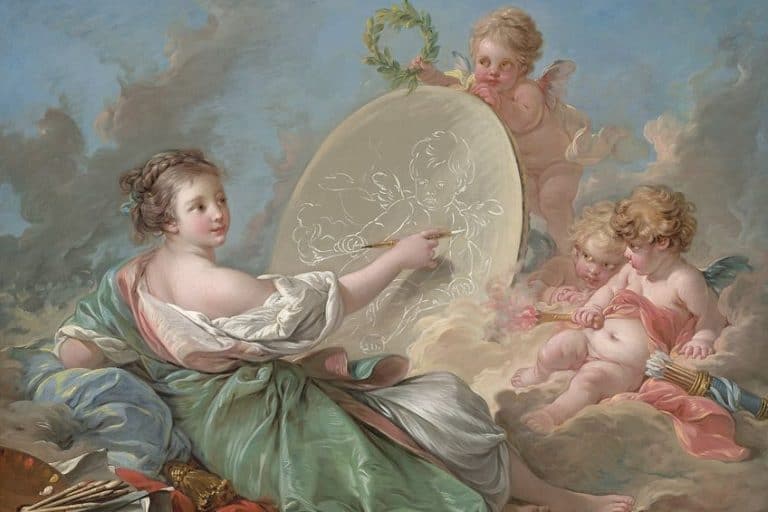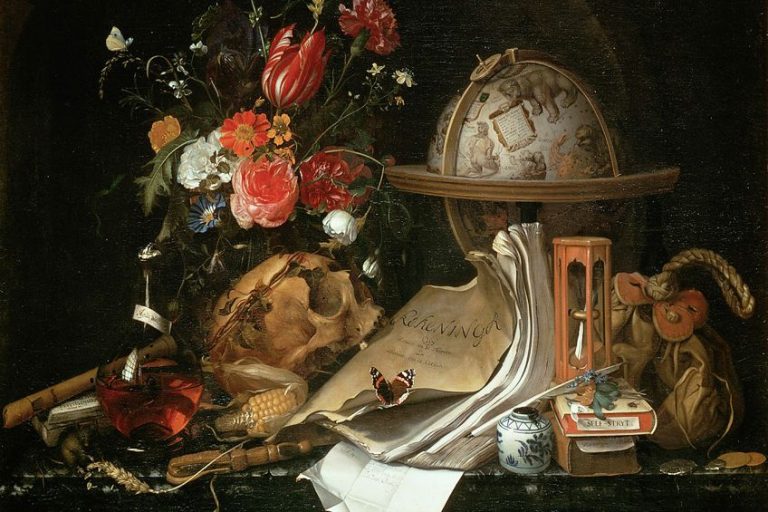Socialist Realism – The History of the Communist Art Movement
Socialist Realism was a cultural phenomenon prescribing ideals for a united society for the masses. It was a type of communist artwork meant to depict a positive, utopian, society. Many have critiqued Socialist Realism in the art world because it was Communist art centered around political ideals with minimal aesthetic value. This article will explore Socialist Realism and the role it played, not only in the world of art but also in the world of politics and history.
Table of Contents
What Is Socialist Realism? A Brief Historical Overview
Socialist Realism started after the Russian Revolution in 1917, more specifically it occurred during 1922 and lasted until around the late 1980s. It was a form of Soviet art, or Russian art, that expressed the ideals of a Communist state in the Soviet Union, which was then governed by Joseph Stalin, who ruled from 1924 to 1953.
The Russian politician Vladimir Lenin (his full name was Vladimir Ilyich Ulyanov) was in power before Stalin, he was in power from 1917 to 1924. Lenin was also an avid Marxist, following the communist ideals, which also led him to create his own structure referred to as “Leninism”.

Lenin is remembered as establishing the Union of Soviet Socialist Republics (USSR) or just Soviet Russia. This was formed by the Bolsheviks, the first ruling Marxist party in Russia who also established a socialist state. After the Bolsheviks won the Russian Revolution in 1917, which was against the Romanov Dynasty, it paved the way for communism and proletariat dictatorship.
It is important to note that Russia was not a flourishing country like the West during the 1900s.
It had many peasants due to Feudalism, which was only abolished in 1861. With the developing Industrial Revolution, also started later in Russia around the early 20th Century, there was an increase in the numbers of industrial workers who worked under severe working conditions. A lot of people were also illiterate.
With this, Socialist Realism was born as the major vehicle by which art and literature were to be created and disseminated. This form of art was to be practiced for propaganda and political reasons Art became a public affair, so to say, however, during Lenin’s time, under his New Economic Policy (NEP) in 1921 there were still artists who sold their artwork as private enterprises, however, this came to an end around the late 1920s and early 1930s.

Lenin is quoted as having said the following about art: “art belongs to the people. It must leave its deepest roots in the very thick of the working masses. It should be understood by those masses and loved by them. It must unite the feelings, thoughts, and the will of the masses and raise them. It should awaken in them artists and develop them”.
The Establishment of Socialist Realism: The Soviet Writers Congress
In 1934, the activist and writer, Maxim Gorky, officially indicated and proclaimed the establishment of Socialist Realism. Before this there were several independent artistic and literary groups, however, during 1932 the Central Committee of the Communist Party ordered that all independent groups be disbanded and ordered for unified arts, also referred to as “State-sanctioned”.
There were several rules that Gorky set out for Socialist Realism. These acted like guidelines for how art should be. Importantly, art needed to be “proletarian”, which means it should be easily understood by the workers.

The other guidelines suggested that art be “typical” (depicting everyday events and people), “partisan”, supportive of the state and political party, and “realistic”, in other words, it needs to depict or represent scenes in a realistic manner.
These guidelines were all structured to be adhered to by all artists with severe consequences in the event of non-adherence.
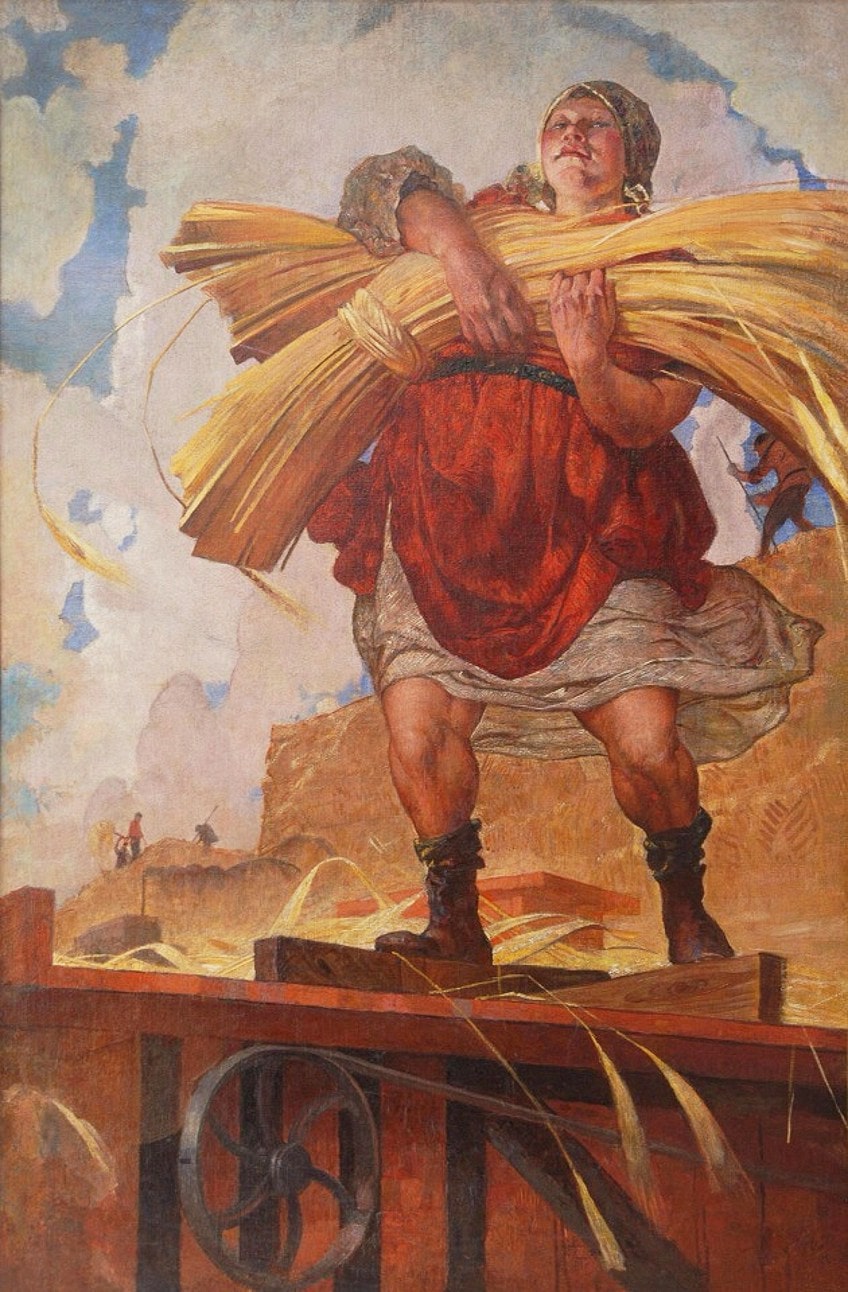
Communist art became solely for the state, after Lenin’s rule, what became even more significant was a form of Stalin art – prescribing that art should strictly serve “functional” purposes. All Soviet art that did not serve the purposes of the state was removed, especially art considered “bourgeois” and that followed avant-garde ideals. In fact, in Gorky’s speech in 1934, he mentioned that art and its economic stances have oppressed the proletariat.
He further stated, “We shall see that the role of the bourgeoisie in the process of cultural creation has been greatly exaggerated, especially in literature, and still more so in painting, where the bourgeoisie has always been the employer, and, consequently, the law-giver”.
Other Significant Socialist Realism Groups in Russia
Apart from the literary group called the Soviet Writers Group (or the Union of Soviet Writers), there were several other groups in Russia that led the way for the Socialist Realist ideologies, namely, the Association of Artists of Revolutionary Russia (AKhRR) and the Society of Easel-Painters (OST), which was formed in 1925 in Moscow.
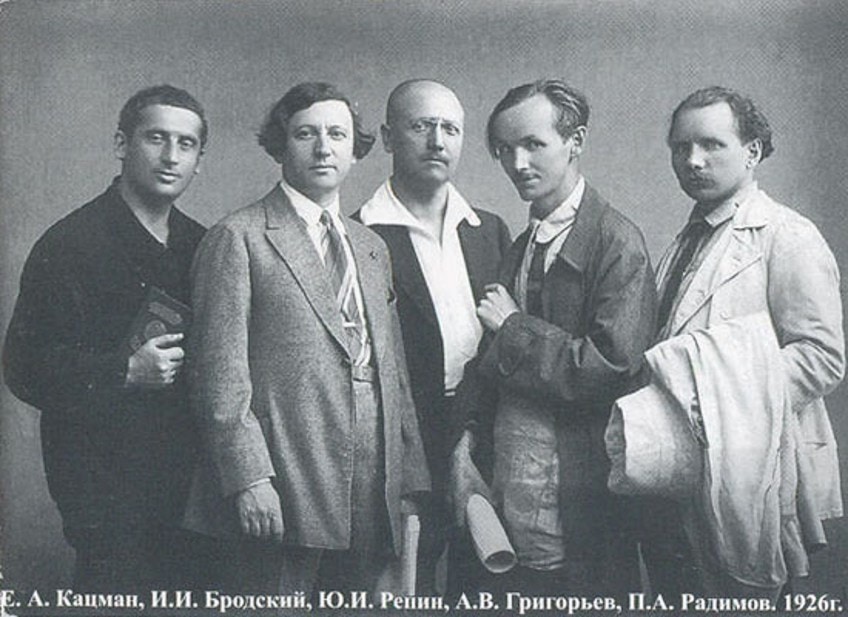
The AKhRR was founded in 1922 but was taken over by the Artists’ Union of the USSR in 1932. This group sought to depict the everyday lives of Russians in a realistic manner, which was also referred to as “heroic realism”. They produced different forms of art like advertisements, designs related to textiles, paintings, and murals.
They were also sponsored by Leon Trotsky, who was a political figure and Marxist. He was also involved in revolutionary acts and was involved in the organization of the South Russian Workers’ Union.
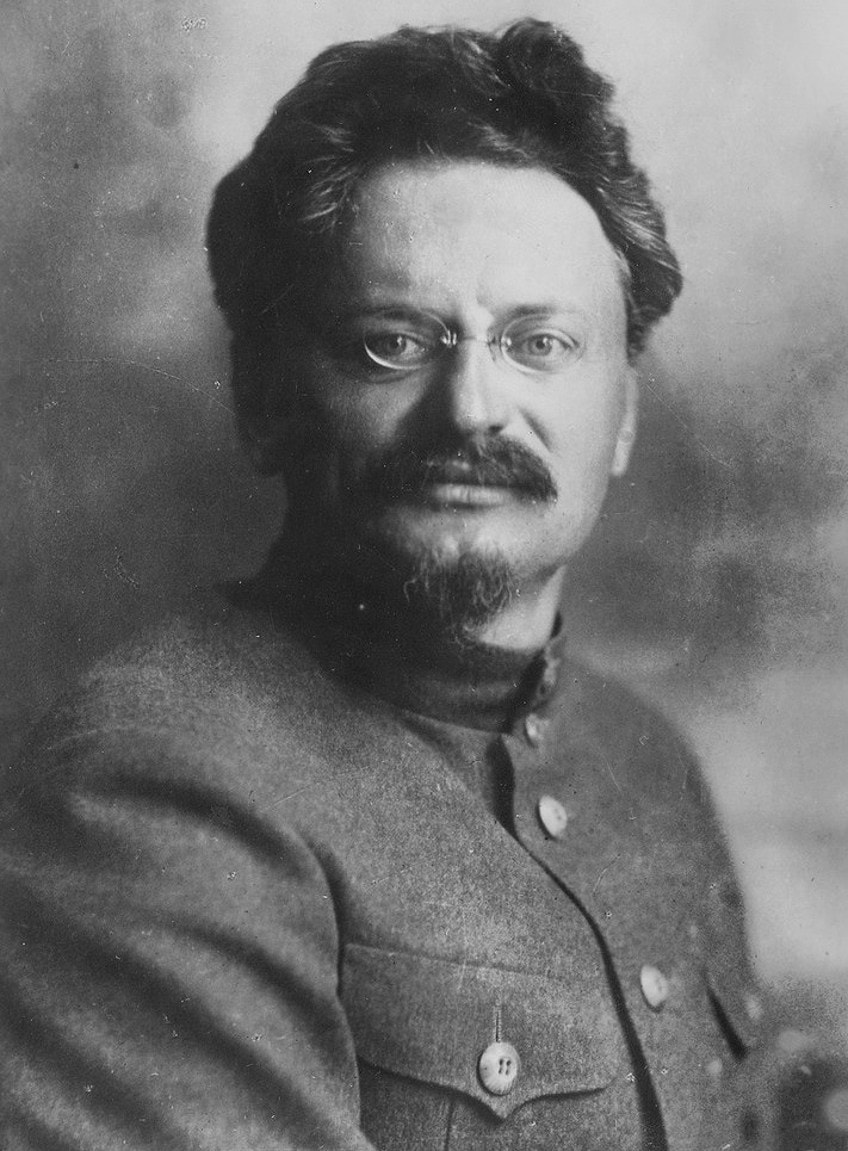
Some of the members of the AKhRR included artists who were already prominent within the art world, for example, Pavel Radimov, Alexander Grigoriev, Sergey Malyutin, and others. The group of artists developed from the other art circle of realist painters called the “Peredvizhniki Movement” – also called “The Itinerants” or “Wanderers” – that developed in reaction to the restrictions from academic art.
They sought to make art accessible to everyone.
The OST started in 1925 in Moscow including some of the members like Aleksander Deyneka and Yuri Pimenov. The group believed in painting according to traditional methods and were opposed to some of the more contemporary movements like Constructivism that sought to fuse art with other functional aspects like architecture and crafts. Some of the themes from the organization included painting everyday Soviet life and work.
“The Official Style of Soviet Culture”: A Look at Socialist Realism Art
Socialist Realism became what is quoted as the “official style of the Soviet culture”, it included everything in the arts from literature, painting, music, sculpture, and film. Creativity emerged and was expressed throughout the communist artwork; however, it was not merely for the sake of creativity or expression – it served propagandist purposes and had specific, might we say, dictated characteristics. Below we discuss some of these characteristics as well as some of the prominent artworks by various communist artists.

Socialist Realism Art Characteristics
The Socialist Realism style had several defining characteristics that outlined the way in which it was produced. First and foremost, it was to convey Soviet, socialist, ideas and values completely in favor of the political party and its members.
There are several words that describe the common characteristics of Soviet art, namely, optimism, utopianism, the “New Soviet Man” or heroism, realism, functionalism, education, venerating the state, and idealism.
Idealism: Optimism and Utopianism
What also came to be known as “Revolutionary Romanticism”, there was always a sense of optimism in Soviet art. The ideal state had to be depicted and the subject matter was required to appear optimistic in all portrayed scenes, whether it was depicting the present or the future. Artistic motifs used to enhance the sense of utopianism were new forms of technology, sunlight, flowers, images of people working, and various other images suggestive of an idealized state.
The “New Soviet Man”
The “New Soviet Man” was an important concept, the working class was held in high regard and almost everything done – from work to home life – was depicted with a sense of admiration. However, more so, Lenin advocated for a new type of man and woman, and how they should strive to be as ideals of advancement and strength, best explained as a sort of “archetype” of the ideal man or woman.
This came to be known as the “New Soviet Man”.
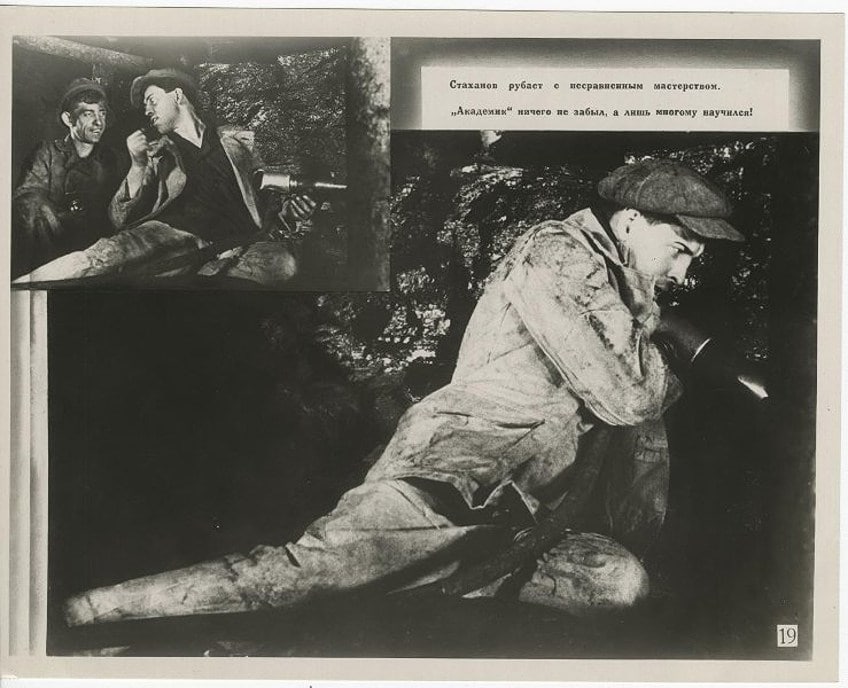
Alexey Stakhanov was an example of this “heroic” figure. He was a coal miner who became famous during 1935 when he was reported to have mined 102 tons of coal in under six hours and in another instance 227 tons of coal in a working shift. The validity of this has been questioned, and some sources also suggest he was assisted and that it was a staged act for propagandist purposes.
This developed the Stakhanovite movement, which consisted of workers who aimed to reach performance targets inspired by Stakhanov. Attributes of this “New Soviet Man” include the following: strength, enthusiasm, muscular, healthy, learned, and selflessness.
Realism
The subject matter was depicted in a hyper-realistic manner, portraying only the happiest and healthiest circumstances of Soviet life and of political figures. The creative process and stylistic portrayal of subject matter were not as important as remaining as close to a realistic portrayal of Soviet life and ideals.
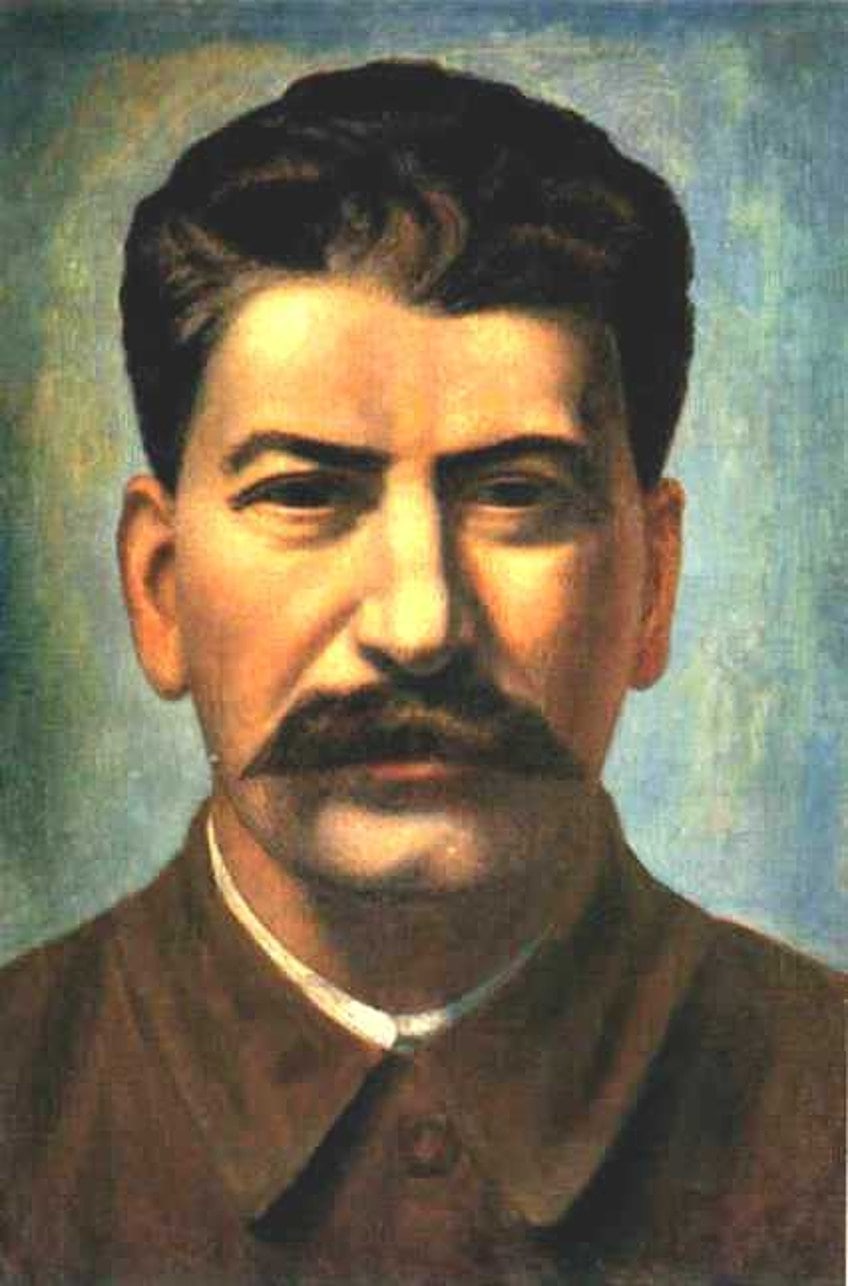
This Soviet realism was the topmost priority for communist artists of any modality. However, as “real” as paintings, for example, were depicted, there was also a depiction of the idealized, portrayed in as real a manner as possible. One example of this is a Stalin art portrait where his deformities are not portrayed – this again is a Soviet realism typical of this movement in Russian history.
Functional and Educational
All Soviet art was meant to be functional and not aesthetically pleasing, it was meant to communicate the messages between the rulers and the people. Furthermore, it was also meant to educate the people, as many were also illiterate. The best means of communication was through visual images.
Soviet art showed the people through visuals how to live or act by always portraying standard themes of hard work and the success of the political party as well as fellow comrades.
The Importance of the State and the Political Party
There were also four primary rules regarding the depiction of political figures or any portrayals in Soviet art, which also ensured the importance and loyalty to the state and the political party. These rules were, namely, narodnost, which referred to a shared nationality between the people; partiinost, which means “party-mindedness”; ideonost, meaning ideologies or content related to it, and klassovost, which related to “class content”.

Socialist Realism Artists and Artworks
There were a vast number of significant Socialist Realism artists who were not all painters, but also talented musicians, filmmakers, and more. However, for the purposes of this article, we will discuss several of the well-known Soviet artists who were notable painters and sculptors, including some of their artworks produced during the era where art was not “art for art’s sake”, but should we say, “art for politics’ sake”.
Isaak Brodsky (1884 – 1939)
Isaak Brodsky was well-known for his paintings of Lenin and other political portrayals from the Bolshevik Revolution and the Russian Civil War. He was one of the famous and highly regarded Soviet artists of the time, a figure many turned to for advice and learning.
He received many accolades during his life as an artist, one of them being the Order of Lenin.
Some of his paintings include Calvary Officer (1909), Lenin and soldiers of Red Army on the way to Poland (1920), Lenin’s Funeral (1925), Day of Constitution (1930), Alley in a Park (1930), and Lenin in Smolny (1930).
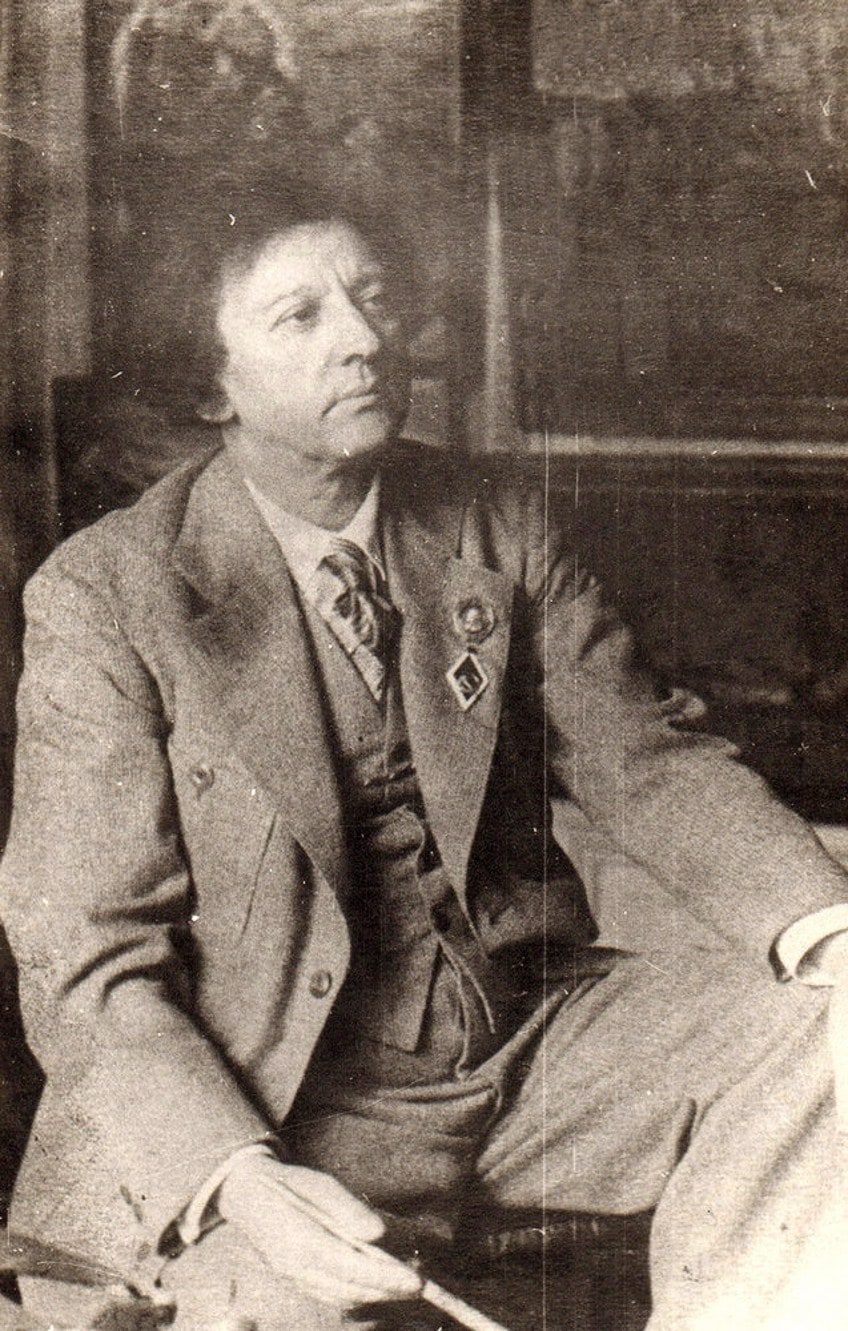
Brodsky’s painting, Lenin in Smolny (1930) is a well-known artwork, depicting Lenin at the Smolny Institute, which was the headquarters for the government after the October Revolution. We see Lenin sitting in a chair to the right surrounded by furniture, two couches (including the one he sits on) are covered in white dust sheets, there is a wooden table in the center, and a wooden stool to the back. We also see various papers on the table as if Lenin has made a quick office space for himself.

This painting is also three meters in height, which emphasizes the figure to a seeming life-sized scale. Furthermore, Brodsky painted the composition in such a realistic manner that it is described as almost “photographic” by some sources.
This painting is exemplary of the tenets of Socialist Realism and depicting subject matter in the most natural manner possible. It was also done after Lenin passed away as honorary paintings.
Boris Ioganson (1893 – 1973)
Boris Ioganson was part of the founding members of AKhRR and studied at the Moscow School of Art. He also won various awards and was a Soviet teacher of arts. His paintings were varied in subject matter, but he painted with the veracity of a communist artist, focusing on the narrative of the scene as well as the portrayals of archetypal figures like the “hero” and “villain”.
Some of his famous paintings include Interrogation of the Communists (1933), and others like Rabfak (Students workers) (1928), Soviet Court (1928), At the Old Ural Plant (1937), and Victory Day on May 9 on Red Square (1947).
“Interrogation of the Communists” (1933) is considered one of Ioganson’s famous paintings.
It depicts two Bolsheviks captured by White generals in the process of being questioned. We notice the two captured standing on the left of the painting while the generals are sitting at a table to the right.
Stylistically there are elements of Romanticism as Ioganson was influenced by this art movement and painted his subject matter in a similar manner. The artist’s works are also described as having a sense of “theatrical” value, which can originate from his studies in theatre design.
Aleksander Deyneka (1899 – 1969)
Aleksander Deyneka (also sometimes spelled Deineka) was a multitalented Soviet artist – like so many. He was a sculptor, painter, and graphic artist. He was also the founding member of some art groups like OST. He studied at the Kursk Railway School and Kharkiv Art College. Some of his notable works include The Defence of Petrograd (1928), The Battle of Sevastopol (1942), The Outskirts of Moscow (1941), and the Shot Down Ace (1943).

If we look at his painting the Shot Down Ace (1943) we notice a shot-down pilot falling in mid-air from his plane, he is close to hitting the ground with numerous steel structures jutting out below him. Around him is a landscape of what appears to be a war-torn area, we see semi-demolished buildings in the background and patches of smoke.
This painting was done as a celebration of the victory between Russia and Germany during the Battle of Stalingrad in 1943.
The artist depicted the subject matter in a realistic manner and an apparent accurate perspectival relationship between the foreground and background. Furthermore, although the subject matter is harsh in its portrayal it is symbolic of victory and justice.

The Defence of Petrograd (1928) is another famous oil painting by Deyneka, depicting a two-tiered composition of Bolshevik men with rifles, walking, and marching in both directions. The theme of this painting is purely related to the Civil War and the men defending themselves against the White armies.
The top section depicts men on a bridge walking towards the left and the bottom section of the painting, below the bridge, depicts men marching towards the right. There is a strong horizontal linearity, which is complemented by the verticality of the rifles held by the men below.
The feeling we get from the painting is one of seriousness and impending events, the men all appear ready for action.
Yuri Pimenov (1903 – 1977)
Yuri Pimenov was another multi-talented artist with experience as a stage designer, graphic artist, and teacher, among others. He also received various awards during his career, including the Lenin Prize in 1967 and the Stalin Prize of the second degree in 1947 and 1950.
A lot of Pimenov’s subject matter includes images of everyday people and couples going about their business, but he also included political subject matter and the typical Socialist Realist motifs of men hard at work.
Stylistically, he was influenced by the tenets of German Expressionism, which is evident in several of his paintings.
Some of his paintings include Increase the Productivity of Labor (1927), New Moscow (1937), Wide Ways (1951), Working brigade (1968), The Find (1957), and the Stewardess (1971). In Increase the Productivity of Labor (1927) we see a composition of five men, wearing leather gloves and no shirts (except for the figure at back wearing a red long-sleeved shirt). They are working in unison, pushing towards a large flame to the left of the composition. The men have serious and focused facial expressions, an attitude of seemingly “just getting on with it”.

We also notice various other masculine figures in the background in the act of work, for example, two figures pushing a cart to the right midline of the painting. Towards the background of the composition, we also notice the outside environment appearing as an industrial urban landscape.
The figures are also depicted as elongated in form, which can suggest the artist’s influence from German Expressionism.
We also notice the influence of Impressionism in Pimenov’s painting New Moscow (1937). Here a woman is driving a convertible car with the top down and we, the viewers, are engaged in the scene from the back of the car, directly behind the driver. The woman as the driver is another theme the artist employs to indicate progress in society and its people.
We see a bustling urban landscape, which is the city of Moscow, there are other cars and people frequenting the streets, all happily going about their business. The painting has a lightness in color and energy suggestive of a thriving city-life and people, along with the “hazy” quality, which gives it a sense of “dreaminess”. However, this painting was created during a time of civil unrest, during what was known as Stalin’s “Great Terror”.
This work is an example of some of the Socialist Realist characteristics of idealism, depicting a utopian city and the idea of progress during times where the reality of life was the complete opposite.
More Social Realism Artworks
While there are hundreds of Social Realist artworks, the above-mentioned paintings are only a handful of some of the famous Soviet artists. A quick glance at other Soviet art will show us just how this communist art expressed the ideals of hard work and an idealized political party.
For example, the painting, Roses for Stalin (1949), by Boris Vladimirski is a typical example of Socialist Realism depicting Stalin standing with a proud countenance. He is surrounded by five children presenting him with flowers with his left arm resting on the back of the child standing next to him. The children also appear in admiration of the political leader, with one child giving a coy smile as if he is seeing a hero.
This painting shows us the political power inherent in Soviet art at the time.
It was undoubtedly utilized to shine a positive light on the political rulers and their power as a positive force in Russian society. As a propaganda piece, it would have been viewed by many to deliver a message of patriotism and union of the people.

Another example is the post-Stalin oil painting, Young Steel Workers (1961), by Ivan Bevzenko. It depicts a handful of men fervently working at a furnace, we see the characteristic ideals of hard work and toil in this depiction, and so many others during this time. Furthermore, the ideals of health and strength are also depicted in the portrayal of young men.
The painting, Stalin and Voroshilov in the Kremlin (1938), by Aleksandr Gerasimov is an exemplary painting depicting two political authorities standing tall and seemingly proud, they appear concentrated in their focus, looking ahead to their city. This air of pride and political prowess is enhanced by the two men standing atop the Kremlin tower with a view of the urban landscape surrounding them.
They also stand in similar poses, which is indicative of unity between them, and ultimately their party and the people. The painting is also symbolic of the sense of hope, seen in the clouds giving way to a blue sky. We also notice the hint of red from the Soviet Star atop the tower, situated almost directly alongside the two figures.
Socialist Realism: Two Sides of the Same Coin
The Socialist Realism movement slowly came to an end several years after Stalin’s death in 1953. Stalin was succeeded by Nikita Khrushchev, who endorsed new policies for the roles of art and culture in Russia. There was also a time when artists and writers were allowed to explore their art beyond the confines of politics.
They were also able to go beyond their own country, and this period of new development was referred to as “The Thaw”.

Socialist Realism has held a contested place within the world of fine arts and art history with many approaching it in a distasteful manner. The art critic Agata Pyzik provides an apt description of this art and political movement, she is quoted as having said: “Socialist Realism remains possibly the most rejected period of Soviet art, identified with pernicious politics and backwards aesthetics. For decades, it was a ‘don’t touch’ moment of art history”.
Socialist Realism almost plays on both sides of the same coin, in other words, as much as it had roots in political and communist ideals, oppressing the natural tendencies of artists of any modality to express themselves freely, it simultaneously showcased a moment in history, Russian history, of what people and a government believed in and wanted for themselves – it was an expression of ideas and values wholly other than most of the world’s, but it was nonetheless an expression.
Frequently Asked Questions
What Is Socialist Realism?
Socialist Realism was a Soviet art and cultural style that expressed the ideals of a Communist state in the Soviet Union. It started after the Russian Revolution in 1917 and occurred, more specifically, during 1922, lasting until around the late 1980s. Socialist Realism became what is quoted as the “official style of the Soviet culture”, it ranged from literature, painting, music, sculpture, and film. Creativity was not as important as the political and propagandist motives inherent in the artworks.
What Are the Characteristics of Socialist Realism?
There were several defining characteristics of the Socialist Realism style. Importantly, it was to convey Soviet, socialist, ideas and values, which were in favor of the political party and its members. The words that accurately describe the common characteristics of Soviet art are, namely, optimistic, utopianistic, heroic (for example, the idea of the “New Soviet Man”), realistic, functional, educational, venerating the state, and idealistic. All these qualities were depicted in artworks, with a focus on realism and naturalistic qualities of subject matter.
Was Socialist Realism in Other Countries?
Although this was a cultural movement largely based in Russia, there were other countries that also followed Communist ideologies and created visual arts in line with Socialist Realism. For example, in the People’s Republic of China and countries like North Korea. There are numerous artistic examples that show the Socialist Realism influence in China, for example, Chairman Mao commissioned the famous painting, The Founding Ceremony of the Nation (1953), by the artist Dong Xiwen. This painting became a famous piece of propaganda art during its time and was reproduced numerous times.
What Is the Difference Between Socialist Realism and Social Realism?
For any art history enthusiast or student, it is important to understand that there will be movements with similar names, and in this case, Socialist Realism sounds like another movement called Social Realism, however, these two movements should not be confused, although they share similarities. Social Realism occurred during the 1920s until the 1950s and was an artistic style of realist art portraying subject matter exploring social aspects, often against those in power or the elites. The art was also described as being a “weapon” and intended to unite the common people. Whereas Socialist Realism was also a realistic art style, but the subject matter was not true to life, and it often depicted idealized notions. It was more oppressed due to the communist nature of the Soviet Union.
Isabella studied at the University of Cape Town in South Africa and graduated with a Bachelor of Arts majoring in English Literature & Language and Psychology. Throughout her undergraduate years, she took Art History as an additional subject and absolutely loved it. Building on from her art history knowledge that began in high school, art has always been a particular area of fascination for her. From learning about artworks previously unknown to her, or sharpening her existing understanding of specific works, the ability to continue learning within this interesting sphere excites her greatly.
Her focal points of interest in art history encompass profiling specific artists and art movements, as it is these areas where she is able to really dig deep into the rich narrative of the art world. Additionally, she particularly enjoys exploring the different artistic styles of the 20th century, as well as the important impact that female artists have had on the development of art history.
Learn more about Isabella Meyer and the Art in Context Team.
Cite this Article
Isabella, Meyer, “Socialist Realism – The History of the Communist Art Movement.” Art in Context. December 2, 2021. URL: https://artincontext.org/socialist-realism/
Meyer, I. (2021, 2 December). Socialist Realism – The History of the Communist Art Movement. Art in Context. https://artincontext.org/socialist-realism/
Meyer, Isabella. “Socialist Realism – The History of the Communist Art Movement.” Art in Context, December 2, 2021. https://artincontext.org/socialist-realism/.





